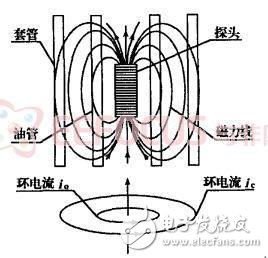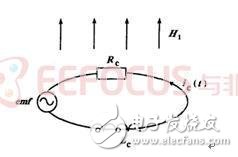Multi-layer petroleum pipeline flaw detection system using electromagnetic induction
This paper introduces an advanced method for detecting multi-layer petroleum pipelines using electromagnetic induction. The system employs the PIC32 microcontroller as the central processing unit to manage the IGBT full-bridge circuit, which drives the excitation coil. A logging hardware system was developed and manufactured, incorporating signal amplification and sampling techniques to ensure accurate data acquisition. Additionally, a comprehensive software suite was created to interface with the system, receiving CAN bus signals and performing data analysis and visualization. This integrated solution offers a reliable and efficient approach for electromagnetic flaw detection in complex, multi-layer petroleum pipelines.
Casing damage in oil and gas fields is a widespread issue that arises during the later stages of oil development. As oilfields age, factors such as high-pressure injection, fracturing operations, mudstone water absorption, rock layer movement, sand production, natural earthquakes, and compaction contribute to casing failure. These issues are not only prevalent in domestic oilfields but also affect international operations, leading to increased maintenance costs and operational inefficiencies.
In China, the problem of casing damage is particularly severe. For example, in 1997, the Daqing Oilfield reported 576 damaged wells, and by 2001, this number had risen to over 700. By April 2003, the Shengli Oilfield alone had more than 5,400 casing-damaged wells. Such a large number of damaged wells represents a significant loss of fixed assets and negatively impacts reservoir control, ultimately reducing oil recovery rates and increasing operational risks.
Addressing casing damage is crucial for maintaining stable oilfield production. Research into prevention and remediation technologies has become essential for extending the lifespan of well casings and improving overall field efficiency. In this context, logging plays a vital role in identifying and assessing casing integrity. It is considered one of the ten core disciplines within the petroleum industry due to its critical importance in well evaluation and maintenance.
Currently, several methods are used for casing inspection, including caliper tools, ultrasonic imaging, and electromagnetic detectors. However, each has limitations. Calipers require precise centering and are unsuitable for severely damaged wells. Ultrasonic methods are sensitive to drilling fluid conditions, often requiring well cleaning before testing. Electromagnetic detectors, on the other hand, offer greater accuracy and are less affected by well fluids or deposits, making them a preferred choice for non-invasive casing evaluation.
In Russia, the MID-K electromagnetic flaw detection tool has been successfully applied for multi-layer casing inspection. In China, while electromagnetic flaw detection research is active, most efforts focus on theoretical models rather than practical systems. Existing systems often lack sufficient performance and accuracy. To address these challenges, this study proposes a high-performance electromagnetic logging system based on the PIC32 microcontroller, aiming to improve detection reliability and provide a more robust solution for multi-layer pipeline inspection.
The transient electromagnetic method, also known as time-domain electromagnetic (TDEM) technique, works by sending a bipolar DC pulse through a transmitting coil. As the current changes, a magnetic field is generated around the coil. According to electromagnetic induction theory, the magnetic field lines penetrate the tubing and casing, inducing currents in both structures. When the pulse ends, a secondary magnetic field is created, which induces an electromotive force (EMF) in the receiving coil. If there is a crack or defect in the casing, especially a longitudinal one, the induced current path is disrupted, leading to a reduction in the EMF and a shorter decay time.

Figure 1: Schematic diagram of probe detection
To model the system, a single-turn loop with equivalent inductance Lc and resistance Rc is used to represent the induced current path, as shown in Figure 2. This model helps in understanding how the electromagnetic field interacts with the casing and how defects influence the resulting signal.

Figure 2: Equivalent circuit of a finite conductor
7-16 Connector,7/16 Din Coaxial Connector,L29 Din To Mini Din Adapter,7/16 Din Rf Connector
Changzhou Kingsun New Energy Technology Co., Ltd. , https://www.aioconn.com